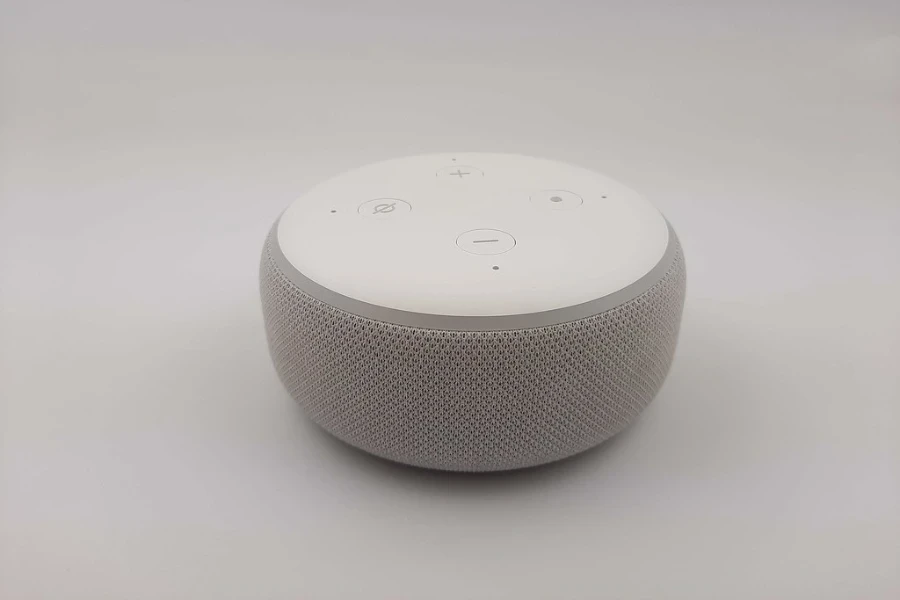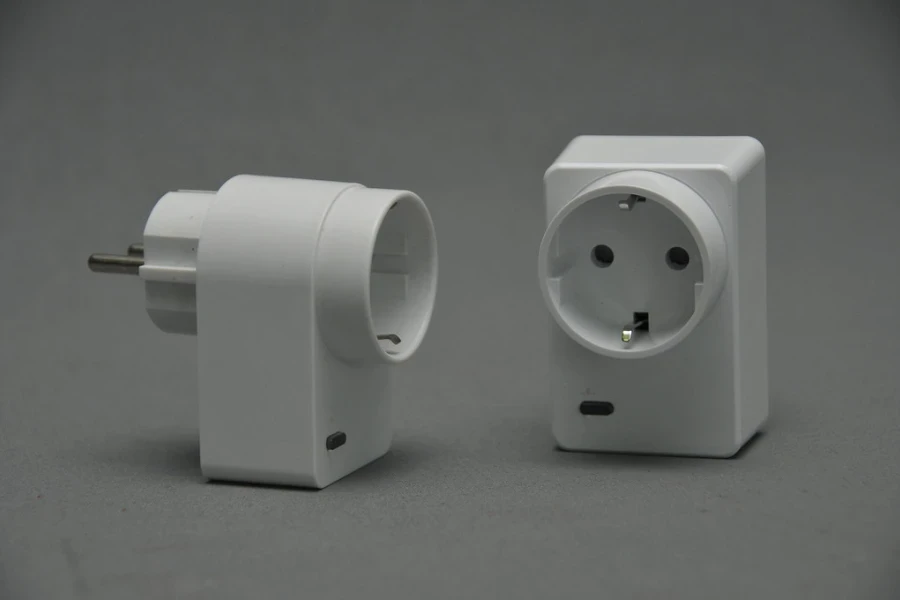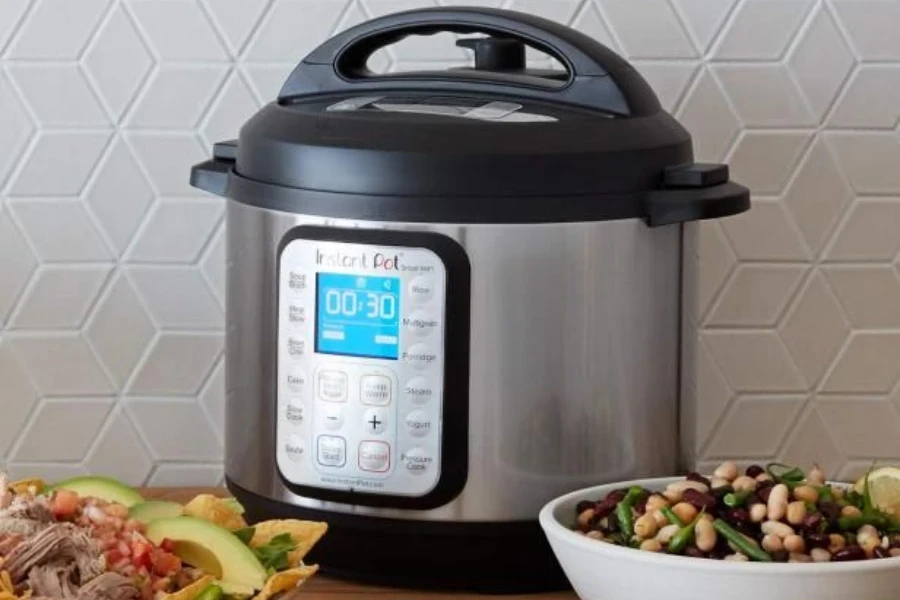People around the world are increasingly shifting towards new technologies that add convenience to their lives. This means that many are embracing a “smarter” life, not just at work but also at home. For this reason, smart homes have become even more popular as more consumers make the switch.
However, consumers can’t have a smart home without the right accessories. After all, it’s what’s inside their furniture and appliances that makes a home “smart.” Given that this market is bursting with potential, businesses can leverage it with these five smart home accessory trends for 2024.
Table of Contents
Why should retailers enter the smart home market?
5 trends sellers should stock in 2024
Focus on these trends
Why should retailers enter the smart home market?
According to research, the smart home market was worth US$ 79.16 billion in 2022, making it one of the most lucrative sectors globally. And it seems the market’s potential won’t stop anytime soon, as experts predict it will grow at a 27.07% compound annual growth rate (CAGR) from 2023 to 2030.
The market’s drivers include the surging trend of adding AI to smart home products and the high penetration of the internet/smartphones. In addition, experts expect Asia Pacific to experience the fastest CAGR (32.21%) over the forecast period.
5 trends sellers should stock in 2024
Smart bulbs
Smart bulbs are on the rise! According to Google Ads, there’s a growing interest in them. From April to October 2023, smart bulbs maintained a steady search volume of 49500 inquiries. However, they experienced a 20% surge in November, spiking search interest to 60500.
And that’s not all. Smart bulbs are also incredibly easy to install. Since they don’t need extra fittings to work, consumers can easily plug them in and watch the bulb do its magic. Here’s where the smart comes into play—-these bulbs can generate any color consumers can think of and support scheduled on-and-off routines.
These devices have also evolved to offer new and exciting ways for consumers to control their lighting and create colorful ambiance in their homes. Also worth noting is that some advanced options can sync with gameplay, music, or movies to create the perfect setting.
Today’s smart bulbs can create personalized experiences from the user’s favorite media. Some even allow consumers to sync them with Spotify.
Smart speakers

Smart speakers are arguably the most popular smart devices today. Don’t believe it? Check out these stats from Google Ads—consumers have searched for smart speakers 1.2 million times!
These devices are incredibly popular because they do more than just play music. Smart speakers operate using Wi-Fi and come equipped with virtual assistants that respond to the user’s voice.
Even better, smart speakers are usually compact, meaning they can fit anywhere in the user’s home—whether on a bedside table or kitchen counter, they will blend in without obstruction.
Additionally, some smart speakers offer touchscreen displays for consumers to watch videos or view recipes. Others may come with built-in cameras to allow users to make video calls without grabbing their phones—or even monitor the environment remotely.
Smart speakers can answer questions on various topics, tell the news, and even give weather and traffic updates. They also like a hub, allowing consumers to set routines for their smart home and control other compatible devices.
Smart plugs

At first glance, there’s no visual difference between smart and regular plugs. They can work in existing wall outlets and do what standard plugs do. However, what makes them different is their Wi-Fi and Bluetooth network connectivity.
Smart plugs can also allow consumers to control other devices through companion apps or virtual assistants. Moreover, when users set these plugs up, they can easily turn appliances on and off without pressing the switch. The best part is smart homeowners can also schedule their devices to start at a specific time.
For instance, they could set their water heater to activate a few hours before they wake up. Or power on a slow cooker and turn it off remotely after the cooking duration runs out—basically, smart plugs offer peak convenience.
Smart plugs are one of the easiest and most affordable ways to start a smart home. Some variants even let consumers monitor their energy consumption. Smart plugs are also generating excellent performance, as searches for them peaked at 110000 in November 2023.
Smart pressure cookers

Consumers seeking ways to cook tasty meals with minimal effort will love smart pressure cookers. They’re like an all-in-one device for the kitchen—smart cookers can weigh food, dice, mince, and blend it in one pot.
One of their major selling points is the increased convenience. Users can preheat these cookers from their phones or tell their virtual assistant to activate them from the bedroom. Consumers can even enjoy a saute feature, allowing them to cook and sear without needing a skillet.
But there’s more! Smart cookers may also come with touchscreens so users can tune the settings to their preferences. The more advanced variants offer built-in cooking calculators with numerous preset recipes. All consumers must do is add the ingredients, and the cooker will guide them through the cooking process.
No doubt, smart cookers have raked in considerable interest. They’ve gotten 22200 monthly searches in November 2023, so a healthy audience is on the lookout for them.
Smart thermostats
Cooling and heating can easily raise a home’s electrical bill. Thankfully, smart thermostats can help consumers save energy and electrical costs.
Smart thermostats are like home managers. They study when the user warms up their home or keeps it cool before programming itself to deliver the best experience—and smart thermostats do this while ensuring energy efficiency.
But how can these devices automate temperature control? Well, they have sensors that can detect when people are around, allowing them to control the environment accordingly. Usually, consumers can also connect them to their smartphones so the thermostats can track their location.
As a result, smart thermostats will reduce the heating or cooling when no one is home and adjust the temperature to the user’s preferred settings before they get home.
Focus on these trends
Smart technology is slowly taking over, with many households around the world following this trend. That means that these days upgrading to a smart home is as easy as changing a light bulb—consumers only need the right devices to enjoy an experience like never before.
In order to make the shift, smart bulbs deliver impressive lighting solutions, while smart speakers are a better way to listen to music and control other devices. Smart plugs are the go-to for controlled activation/deactivation, and smart thermostats can regulate temperature automatically.
These are the top smart home accessory trends consumers need to transition from standard to smart in 2024.



